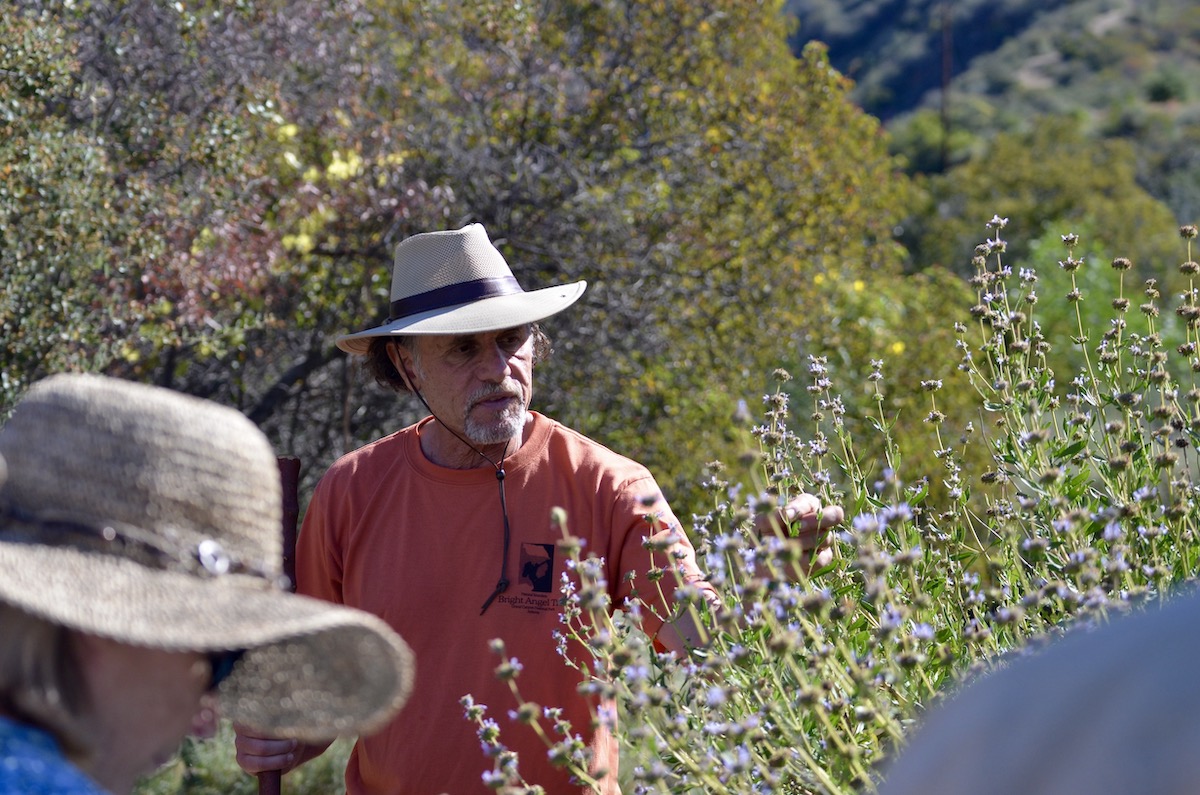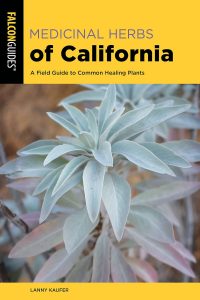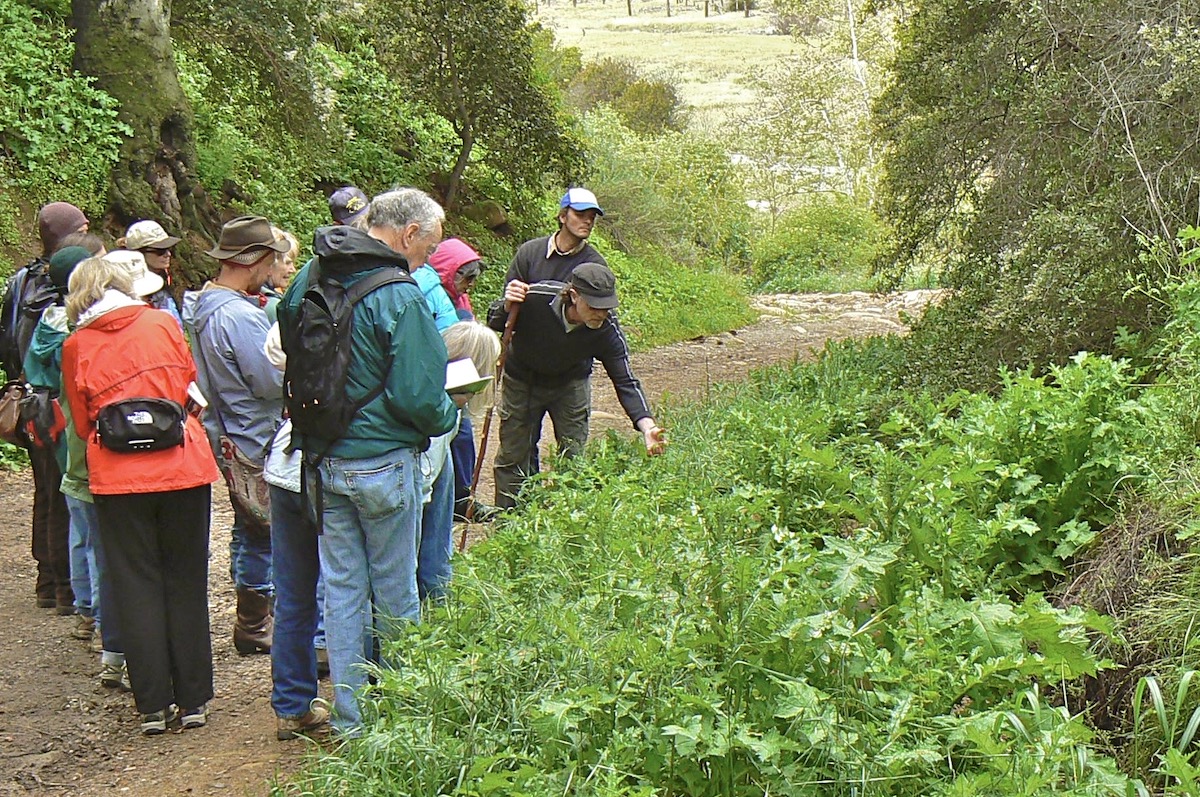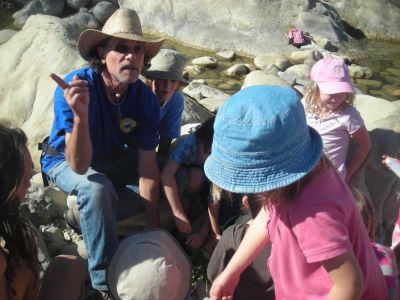Lanny Kaufer Finds Healing in Nature
Ojai-Based Herbalist Pens Medicinal Plants of California Field Guide

Lanny Kaufer managed to keep the opus about his life’s work rather apolitical. But there’s no denying that Western medicine’s century-old ignorance of the health benefits that grow naturally in our own backyards — a contrast to the industry’s utter reliance on synthetic pharmaceuticals — is what drives this herbalist to share his knowledge every day.
“America now spends $12 billion a year on herbs and herbal supplements,” said the author of the recently released Medicinal Herbs of California, the first field guide ever focused solely on the Golden State’s many beneficial plants. “It’s certainly popular, and it’s popular for the same reasons that these plants were handed down for centuries through the oral traditions of Indigenous people: Because they work.”
But Kaufer does not rely on tradition to prove that point. Unlike most other field guides, his book includes a 12-page bibliography and more than 350 citations of verified research about the efficacy of plants such as yerba santa, elderberry, and stinging nettle to bolster his medicinal suggestions.
“‘Follow the science’ has become a mantra for our time,” said Kaufer. “That’s why I devoted so much time to describing the compounds found in these plants with links to studies that show exactly what these compounds are capable of doing.”

The book — a full-color, 281-pager featuring about 70 plants and published in January by Falcon Guides — is the culmination of a fascination that began when Kaufer was a UCSB student in the 1960s. While on a school trip to New Mexico, he wound up on a Pueblo reservation with a cold. An elder presented him a bag of foraged herbs and told him how to prepare it.
“I made the tea and inhaled the steam and drank the tea,” recalled Kaufer. “Lo and behold, my cold went away. I was really intrigued by that.”
He dove into the existing medicinal plant research when he returned to Santa Barbara and could only find Back to Eden by Jethro Kloss, which focused mainly on species from the East Coast and Europe. He learned more from his next-door neighbor in Summerland — William LeSassier, who became a famous herbalist — and took a class from a Chumash woman named Juanita Centeno, who became his mentor for many years. “Then my studies just continued in every direction,” said Kaufer, who started leading his own “Herb Walks” in 1976.
When Michael Moore began publishing books about the medicinal herbs of the Southwest in the 1980s, Kaufer finally found evidence that wasn’t just anecdotal and ethnographic. “Science was really brought in to explain the compounds that are in the plants and how they could potentially do what the Native American people have been saying they did,” said Kaufer. “Those books became my guiding lights for years.”
After decades of teaching at Ojai private schools and Santa Paula High, he retired in 2008. “Since then, I’ve been able to devote myself entirely to this,” explained Kaufer, who built his HerbWalks.com website in 2012 and started leading hikes more regularly.

When a publisher approached him about writing a book, Kaufer thought that they needed to do at least two, “because California is such a large and botanically diverse state.” But they only wanted one, so he began whittling down a list of “every native or naturalized plant in California that was known to have any medicinal properties,” from the desert of Southern California to the redwood forests of the north. He took 200 plants down to about 70, based on records of Indigenous use, current pharmacological information, environmental sustainability regarding collection pressure, and not repeating species such as dandelion that have already been covered extensively.
He was surprised once he started down the research path. “I wasn’t anticipating how much there was in the scientific literature on the pharmacology of plants, most of it from other countries,” explained Kaufer, who extrapolated that evidence when necessary. “I could relate that to the same genus of plants, given that there is a very good likelihood that the same compounds should be in the local versions of our plant.”
He took all of 2020 to write the book. “It turned out to be kind of the perfect time to have a project like that, hunkered down with my computer and my library,” said Kaufer of those early COVID days. “And because of the pandemic, people are learning even more.”

Kaufer suggests using the book at first as a means of identifying a few of the common plants found on your nearby hikes. “You’d be surprised how much you can do in terms of home remedies with just a few key plants that grow in your area,” he explained. “It can be a little overwhelming to try and read the book like you would read a novel. There is a lot of information packed in there.” He’d like readers to pick a plant, make a positive identification, and then “get to know the plant — touch the plant, smell the plant, taste the plant.”
Though herbs are popular, they remain on the fringes of Western medicine, which expunged traditional remedies in the early 20th century in favor of synthetic drugs. Kaufer explains how that shift happened in his introduction — specifically, due to the Carnegie- and Rockefeller-supported Flexner Report of 1910 — and said that the stigma persists. “Today’s physicians and health professionals are victims of that history,” he said.
But Kaufer sees hope for herbs, thanks to cannabis. “I call it the gateway plant,” he said, citing the tremendous amount of research that’s ensued since marijuana was legalized. “Hopefully that trend will continue as people realize that cannabis is just one of hundreds of thousands of medical herbs. Maybe we should learn more about some of the other ones too.”
Medicinal Herbs of California is a tool in that educational plight, putting this scientifically validated knowledge back in all of our hands. But at its core, it’s mostly about appreciating the outdoors.
“That’s one of the things I tell people on my walks: ‘Nature is the teacher. I’m just the guide,’” said Kaufer. “I see the book the same way. It’s a guide to have people get out and have personal experiences with the plants in nature. They may have revelations about the plants that I’ve never had.”
Sign up for Indy Today to receive fresh news from Independent.com, in your inbox, every morning.
411
Lanny Kaufer’s book release party is Sat., Feb. 5, 1:30 p.m., at the Ojai Valley Museum. See ojaivalleymuseum.org. He is also leading an herb walk on the San Antonio Creek Trail on Monday, Feb. 21. He will have books for sale, and they can also be purchased directly from his website herbwalks.com.
Plants to Try
Kaufer suggests trying these three plants to start.
Black sage: This is very common in the coastal sage scrub found between the beach and the mountain slopes. “The terpenes found in black sage are well-proven to be pain-relieving, anti-anxiety, and anti-bacterial,” he explained, suggesting that foragers make a sun tea, warm the liquid up to body temperature, and then do a foot soak. “These terpenes will be able to cross the barrier directly into the nervous system and affect the pain receptors. My citations link to studies online that explain exactly how all that happens.”
Coastal sagebrush: This is very common and not actually a sage, and it can be applied to the skin as an ointment or liniment. “If you can touch where the pain is, then you can apply directly to it,” he said. “It won’t cure whatever is causing the pain, but it will stop the pain.”
Goathead: This aggressively invasive, thorny weed is a cyclists’ nightmare, but it can fight inflammation, reduce cholesterol and triglycerides, excrete uric acid, and may even improve sexual function. “Goathead has an interesting reputation,” said Kaufer. “It’s appeared in formulas that bodybuilders use if they are trying to avoid synthetic steroids, and it has urban-legend status for enhancing male sexual functions and incresing sperm production.” Like many plants in the book, Kaufer says more studies are needed, especially clinical ones conducted on humans.
Grow Your Own
Feel nervous or irresponsible about foraging from nature? Kaufer said most of these plants can also be grown at home, depending on where you live. “I included cultivation information because I wanted to mitigate the possible effects of collecting these plants, which has never been done in enough quantities to be a problem,” said Kaufer. “But ironically, if my book became popular, I guess it could potentially become a problem.” One last word of advice: “I would not recommend growing goatheads.”
Support the Santa Barbara Independent through a long-term or a single contribution.




You must be logged in to post a comment.